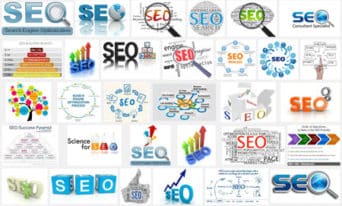How to Generate Leads Using Compelling Content
by Jessica Lawlor
Insights / Digital Marketing /

What’s your website’s primary goal?
If it’s to convert new visitors into qualified leads, that’s much easier said than done, of course.
Even if your web visitation is through the roof, that doesn’t necessarily mean the people visiting your site are going to buy from you. You have to showcase your brand’s value to them and give them a reason to purchase from you rather than the competition.
How? There are lots of ways, but one of our favorite strategies is content marketing — creating high-quality, compelling content to reach and influence your given audience.
Here’s a simple four-step process to follow.
Step 1: Do your homework
You know you need to create content to establish yourself or your brand as a thought leader in your industry. Great!
But all content is not created equal.
Before you put pen to paper (or finger to keyboard), do some research to figure out what content types and topics would be most compelling to your audience.
A great place to start is with SEO and keyword research.
Keywords give you a glimpse into what topics your audience is looking for most often, giving you insight into the type of content you should be creating.
It’s simple logic — if a potential customer is looking for something and finds it on your website as opposed to one of your competitors, it helps to establish your authority in their mind, making them more likely to purchase from you. Win!
Google AdWords offers a free Keyword Planning tool to its customers that can be useful when searching for keywords. On the other hand, other paid tools like Moz, Spyfu and SEMrush can give you a deep dive into the information you need.
With your list of potential topics in mind, go one step further to determine how to format your content. Will this live as a blog post on your website or do you need an entire video series to cover all of the info? Should you launch an ebook? The possibilities are endless!
While you’re in the research phase, check out what some other competitors in your industry are doing and try to suss out the favored content format of your target audience, so you can plan accordingly.
Step 2: Create compelling content
Once you know what type of content your audience wants to read and your format of choice, it’s time to get to the real work: Production.
One of the most important things to remember at this stage is that you don’t need to work in a bubble and you don’t have to go it alone.
If you want to create an amazing ebook but aren’t the best copywriter, consider outsourcing that portion of the project to a professional. You can make sure they still have your final vision in mind as they work on the copy, but it takes the pressure off of you to excel in an area where you are not an expert.
Along those same lines, if you want to create a video series but have limited shooting and editing skills, hire a videographer or an agency that can help.
Not sure where to begin? Let’s see if we can work together on your next big project. (See what we did there? Content marketing at work.)
Also, when it comes to creating content, it’s important to remember that it can take time to see results, and you may have to experiment and try new approaches.
Patience (and persistence) are key.
Step 3: Optimize your landing pages for conversion
If your main goal for creating content is to generate new leads for your business, then you better make sure your landing pages are optimized to get you there.
In its most basic form, a converting landing page has three elements: an attention-grabbing headline, great body copy that increases consumer interest as they read down the page and a powerful call-to-action.
A great way to generate leads right off the bat is by creating a barrier to entry for your content.
If you’re pushing your brand new ebook, require a customer to enter their email address or other relevant contact info before they can download it.
Step 4: Market your content
People aren’t going to just find your masterpiece on their own (unfortunately). You’ve got to point them in the right direction with some targeted content marketing.
Here are some ideas for ways to share and market your content:
- Tweet it out.
- Create a compelling Pinterest graphic and share it to your Pinterest account.
- Post it on LinkedIn.
- Publish a Facebook post.
- Consider spending a bit of money to create a Facebook or Twitter ad
- Send it out in your e-newsletter
- Bid on some targeted keywords using Google AdWords.
- Write a guest post on a relevant blog or website.
Figure out a strategy that works for your business, your content and (most importantly) your budget to help make sure the right customers are finding your work.
Once you’ve established yourself or your business as a thought leader in your industry using valuable and informative content, you have a competitive edge that sets you apart in your audience’s eye.
How do you use content to generate leads? Let us know on Twitter.
Photo by William Iven on Unsplash




